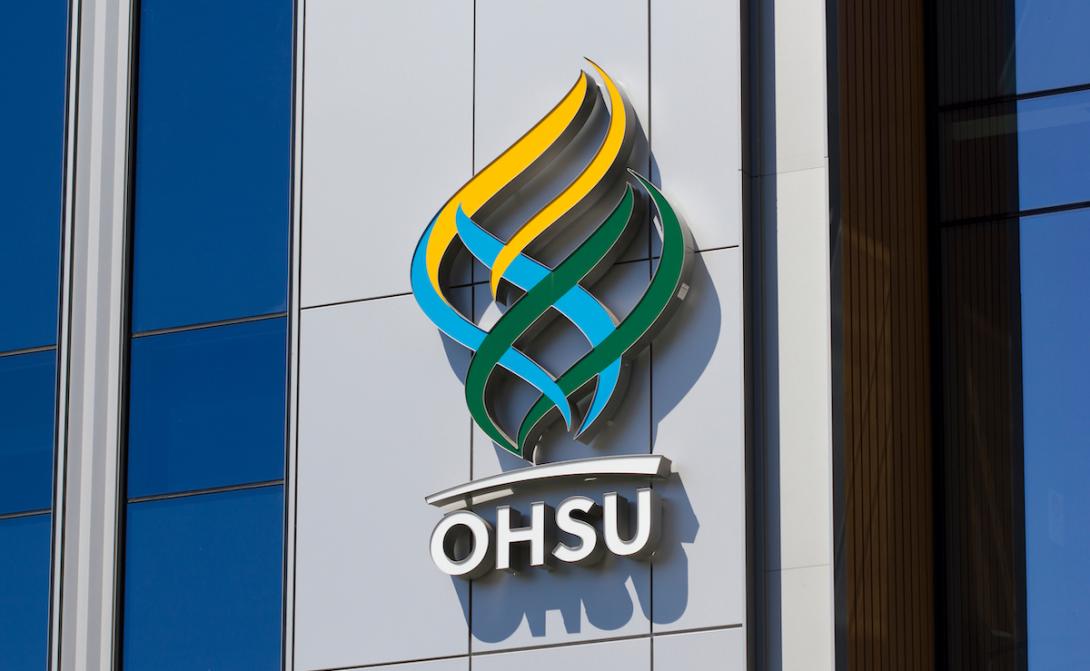
Oregon Health & Science University pulled in higher revenues and substantial profits through this summer, but in coming months it faces steep increases in expenses, including much higher wages and drug costs, OHSU executives told the board of directors in a quarterly financial update on Monday.
To cover rising costs, Oregon’s flagship medical institution will need to increase the volume and range of health services it provides, especially outpatient and cancer care, and also press commercial health insurance companies to up the rates they pay OHSU for the care of their members, the officials told the board.
The report came as 3,100 nurses at OHSU voted to authorize a potential strike over wages, staffing and other money-oriented issues at stake in ongoing contract negotiations between OHSU and the Oregon Nurses Association. Pay is a big focus: OHSU has offered a 15% across the board increase in the first year of the contract, with 4% in each of the following two years; the nurses want 15%, followed by two years of 8% each, according to a fact sheet posted by the union.
The sides are also at odds in areas that include staffing levels; pay raises retroactive to when the contract lapsed in June; and one-time bonuses.
For the current fiscal year that started July 1, OHSU budgeted an undisclosed amount to cover increases under an anticipated new contract with the nurses. But that amount likely will prove far too small, OHSU Chief Financial Officer Lawrence Furnstahl told the board.
“Based on negotiations to date and recent contract settlements at other Oregon hospitals, as well as other factors, we now estimate that nursing wages, staffing and orientation costs in (the current fiscal year) will increase $78 million more than budgeted,” he said.
Still, while many other hospital systems in Oregon and nationwide have floundered financially at the tail end of the pandemic, OHSU has emerged strong, with surging revenues for patient care and strong investment portfolios.
For the fiscal year that ended June 30, OHSU netted an operating profit of $53 million on operating revenues of $4.6 billion, well above the budgeted breakeven budget on revenues of $4.3 billion, Furnstahl told the board. OHSU’s net worth, including the value of its foundation investment portfolio, clocked in at $4.1 billion at the end of June, up $149 million from 12 months earlier, Furnstahl said. That’s in large measure due to good investment portfolio returns, he said.
Patient mix shifts
It’s not just labor costs squeezing OHSU finances.
In recent months OHSU has seen fewer patients covered by commercial health insurance and more covered by Medicare, the government-funded plan for the elderly. Partly driven by an aging population, the trend is a financial negative for OHSU.
The government sets tight limits on the rates it pays to providers such as hospitals for treating Medicare and Medicaid patients. Those payments fall short of covering the actual cost of care, OHSU and many other hospitals around the country have long asserted. Hospitals rely on payments from commercial insurers to make up the difference.
But commercial patients accounted for 41.2% of OHSU patients in the just-concluded fiscal year, down from 42.4% in the previous fiscal year, Furnstahl told the board. Meanwhile, Medicare patients account for 34.1%, up from 32.2% a year earlier, he said. Medicaid patients accounted for 23.7% in the just-concluded fiscal year, down from 24.3%.
In July, commercially insured patients accounted for 39.9% of hospital patient volume, down from 42.8% a year earlier, Furnstahl said.
OHSU will be leaning on commercial insurers not only for “inflation-appropriate payment rates” to help cover the rising cost of labor, but also to continue to cover the gap between government Medicare and Medicaid payments and actual costs, Furnstahl said.
Commercial insurance “is where we have to make up these cost increases,” said OHSU board member James Carlson, a retired executive from the Oregon nursing home industry. “That’s going to be a tall order to sustain that, with the kind of (cost) increases we are experiencing,” he told Furnstahl.
The changing patient mix underscores the importance of OHSU increasing its volume and range of patient services, Furnstahl responded. An ongoing expansion of the hospital, due to be completed in December 2025, and the proposed merger with the Portland-based Legacy Health hospital system, which may take a year to complete, will help accomplish those goals, he said.
Cancer care could boost finances
OHSU wants to focus on increasing care performed on an outpatient basis, said Dr. John Hunter, CEO of OHSU Health Systems. “The good news is the demand is there. The bad news is we have trouble meeting that demand,” he said.
OHSU is also ramping up its cancer care capacity, which could improve its bottom line.
Hunter said OHSU expects to double its volume of cancer patients by 2030 and hire an additional 200 faculty members for cancer-related services. Many cancer care patients are on commercial insurance rather than government-funded insurance, and OHSU’s cancer care has a statewide draw, he said.
“It is a service line that is going to be good financially (for OHSU) as well as to serve Oregonians with the care they can only receive at OHSU,” he told the board.
No mention of tort claim notices, lawsuits and settlements on sexual and racial discrimination and misconduct?